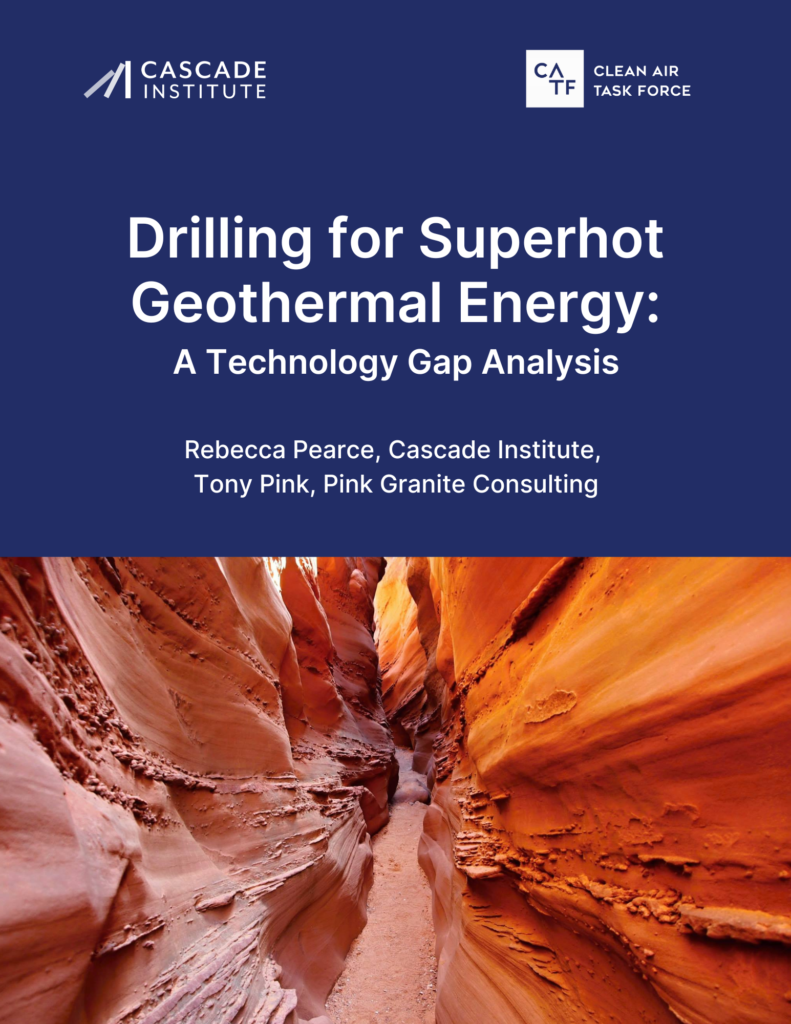This report reviews state-of-the-art deep geothermal drilling and well-construction technologies, identifies existing technology gaps, and suggests strategies to overcome these gaps. The technologies include conventional drill bits, hybrid conventional drill bits, direct energy drilling systems, high-temperature downhole tools, insulated drill pipe, low-heat coefficient coatings, supercritical CO2, drilling fluid, drilling muds, and mud coolers. Each technology is assessed and given a technology readiness level between 1-9, from theoretical to commercially scalable.
The report focuses on the technology frontier for drilling and well construction in the context of the superhot rock (SHR) geothermal energy systems: the production of renewable, baseload electricity by circulating water in deep (>5 km) rock that is more than >374˚C. While the Cascade Institute’s Ultradeep Geothermal Program covers a broader range of next-generation geothermal systems (including lower-temperature systems), the technology assessment in this report is relevant to all ultradeep geothermal projects.
Cascade Institute Ultradeep Geothermal science lead Rebecca Pearce presented an accompanying 10-page assessment at Stanford University’s 50th Workshop on Geothermal Reservoir Engineering in February 2025. The assessment, available here and linked below in the Version of Record download distills key findings from the full report by Pearce and co-author Tony Pink.

